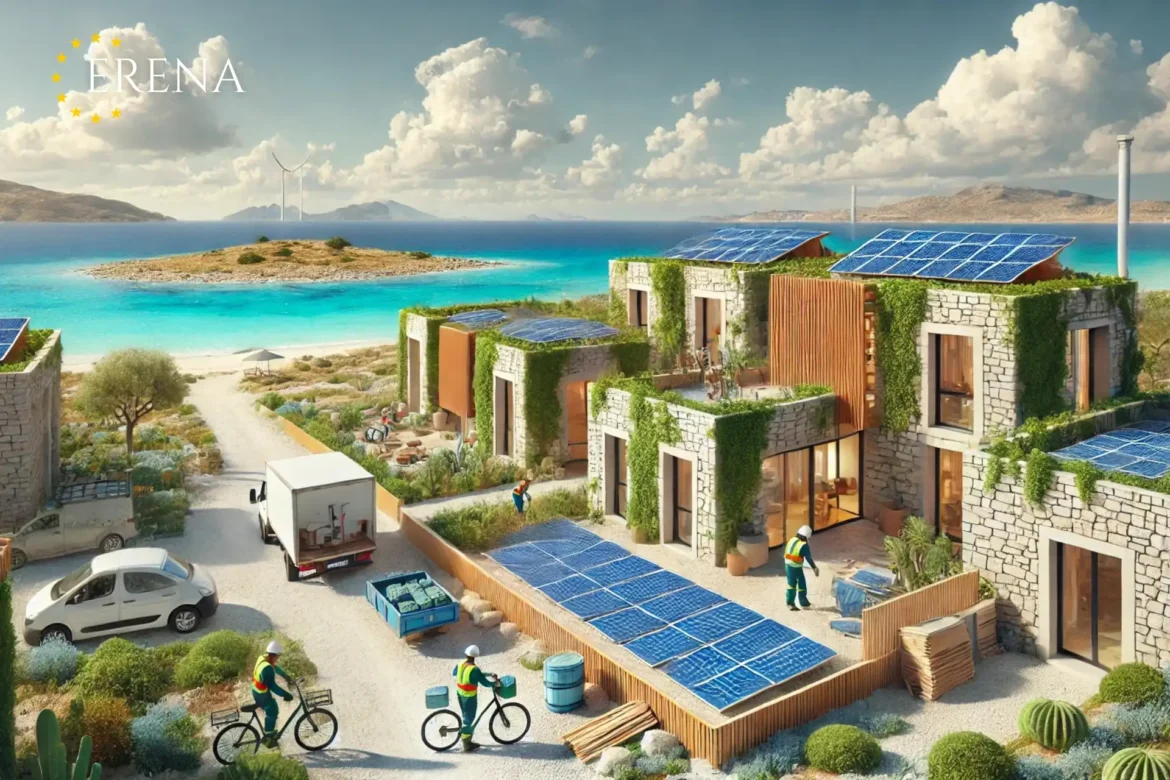Favignana, an idyllic island in the Aegadian archipelago off Sicily, is famous for its crystal-clear waters, pristine beaches, and stunning landscapes. However, with increasing development pressures, the island is focusing on sustainable building practices to protect its environment while accommodating growth. This article explores how sustainable construction is gaining popularity in Favignana and the economic and environmental benefits it brings.
Why Sustainable Building Practices Are Important for Favignana
In recent years, there has been a notable shift toward green building practices on Favignana. As a popular tourist destination, the island is grappling with environmental concerns like rising sea levels and habitat loss. Sustainable construction is emerging as a solution to these challenges, helping to preserve Favignana’s natural beauty and resources for future generations.
Several factors are contributing to the rise of sustainable building in Favignana:
- Growing Environmental Awareness: With global awareness about climate change, local residents and visitors alike are demanding that the island prioritize eco-friendly practices.
- Government Incentives for Green Construction: Italy’s national and regional incentives, such as tax credits and grants, have made sustainable building practices financially viable for developers.
- Eco-Conscious Tourism: With more tourists seeking sustainable travel options, there’s increased demand for eco-friendly accommodations and developments that integrate with the island’s landscape.
Key Sustainable Building Practices in Favignana
Several eco-friendly building practices are being implemented across the island, reflecting a strong commitment to sustainability:
1. Energy-Efficient Buildings
Energy-efficient buildings are becoming the norm on Favignana, incorporating solar panels, thermal insulation, and passive heating and cooling systems. Solar panels help reduce energy consumption by powering lighting, appliances, and air conditioning—an essential feature during the island’s hot summers.
2. Use of Local and Natural Materials
To minimize the environmental impact of construction, developers on Favignana are prioritizing locally sourced and natural materials such as limestone, volcanic stone, and wood. This not only supports the local economy but also ensures that new developments blend seamlessly into the island’s natural surroundings.
3. Water Conservation Initiatives
Given the region’s water scarcity, sustainable buildings on Favignana often feature rainwater harvesting systems, water-efficient appliances, and permeable paving materials that allow rainwater to seep into the ground. These practices reduce the overall water demand, ensuring a sustainable water supply for residents and visitors.
4. Green Roofs and Walls
Innovative green roofs and living walls are gaining popularity in sustainable building designs on Favignana. These features not only provide additional insulation but also support biodiversity by hosting native plants. Green roofs are particularly effective at reducing the urban heat island effect, improving air quality, and lowering energy costs.
5. Waste Reduction Strategies
Sustainable construction on Favignana emphasizes waste reduction, including on-site recycling programs and the reuse of materials from older buildings. Some projects also feature composting systems to minimize organic waste.
Cost Considerations: Is Sustainable Construction Expensive?
One of the most significant concerns regarding sustainable building is the upfront cost. Green buildings generally require higher initial investment due to the use of eco-friendly materials and advanced technologies. On Favignana, the cost of sustainable homes can range from €1,500 to €2,500 per square meter, compared to €1,000 to €1,500 per square meter for traditional builds.
However, the long-term savings are substantial. Sustainable homes benefit from lower energy and water bills, reduced maintenance costs, and longer lifespans. Additionally, tax incentives from the Sicilian government can offset the higher initial costs, making these projects more affordable.
Economic Impact of Sustainable Construction in Favignana
Adopting sustainable construction practices offers significant economic benefits to Favignana, such as:
- Boosting the Local Economy: Sustainable building creates new business opportunities in sectors like renewable energy, eco-friendly tourism, and green construction materials.
- Attracting Eco-Conscious Tourists: As more travelers seek destinations that prioritize sustainability, eco-friendly accommodations and developments are likely to attract higher-paying visitors, boosting the tourism sector.
- Long-Term Economic Growth: Sustainable development helps ensure the island’s resilience to environmental challenges, providing long-term stability for local businesses and residents.
Conclusion: A Sustainable Future for Favignana
Favignana is embracing sustainable building practices to protect its environment while supporting growth. By focusing on energy efficiency, local materials, water conservation, and waste reduction, the island is setting an example for eco-friendly development in the Mediterranean.
Though the initial cost of sustainable buildings may be higher, the long-term benefits—both environmentally and economically—are clear. With government incentives and growing demand for eco-conscious travel, Favignana is poised to become a leader in sustainable tourism and construction.

